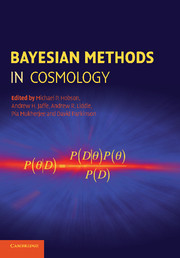Book contents
- Frontmatter
- Contents
- List of contributors
- Preface
- Part I Methods
- Part II Applications
- 7 Bayesian source extraction
- 8 Flux measurement
- 9 Gravitational wave astronomy
- 10 Bayesian analysis of cosmic microwave background data
- 11 Bayesian multilevel modelling of cosmological populations
- 12 A Bayesian approach to galaxy evolution studies
- 13 Photometric redshift estimation: methods and applications
- Index
8 - Flux measurement
Published online by Cambridge University Press: 11 April 2011
- Frontmatter
- Contents
- List of contributors
- Preface
- Part I Methods
- Part II Applications
- 7 Bayesian source extraction
- 8 Flux measurement
- 9 Gravitational wave astronomy
- 10 Bayesian analysis of cosmic microwave background data
- 11 Bayesian multilevel modelling of cosmological populations
- 12 A Bayesian approach to galaxy evolution studies
- 13 Photometric redshift estimation: methods and applications
- Index
Summary
Introduction
The measurement of the flux of an astronomical source is a classic parameter estimation problem in which the quantity of interest must be inferred from noisy data. The Bayesian methods described in this book provide a clear, unambiguous, selfconsistent and optimal method for answering this type of question, but the vast majority of flux measurements are made by applying a heuristic classical estimator to the data. This raises some immediate questions: Why is the estimator-based approach adopted in most cases? How do the resultant flux measurements differ? What is the relationship between the two techniques?
To answer these questions first requires an understanding of the astronomical measurement process itself (Section 8.2), which leads very naturally to the definition of the standard flux estimator (Section 8.3). Using a model for the source population (Section 8.4) as a prior, it is also possible to apply Bayesian inference to the problem (Section 8.5), although care is required to avoid some potential inconsistencies (Section 8.6). Even with the full Bayesian result in hand, however, the existence of databases containing billions of classically estimated fluxes and errors leads to a number of practical considerations which argue against simply reporting posterior distributions for astronomical fluxes (Section 8.7).
Photometric measurements
How is the flux of an astronomical source measured? ‘With great difficulty’ is one possible answer, especially given a history of photographic plates, dipole antennae, microdensitometers and other arcane equipment.
Information
- Type
- Chapter
- Information
- Bayesian Methods in Cosmology , pp. 193 - 212Publisher: Cambridge University PressPrint publication year: 2009
Accessibility standard: Unknown
Why this information is here
This section outlines the accessibility features of this content - including support for screen readers, full keyboard navigation and high-contrast display options. This may not be relevant for you.Accessibility Information
- 2
- Cited by
